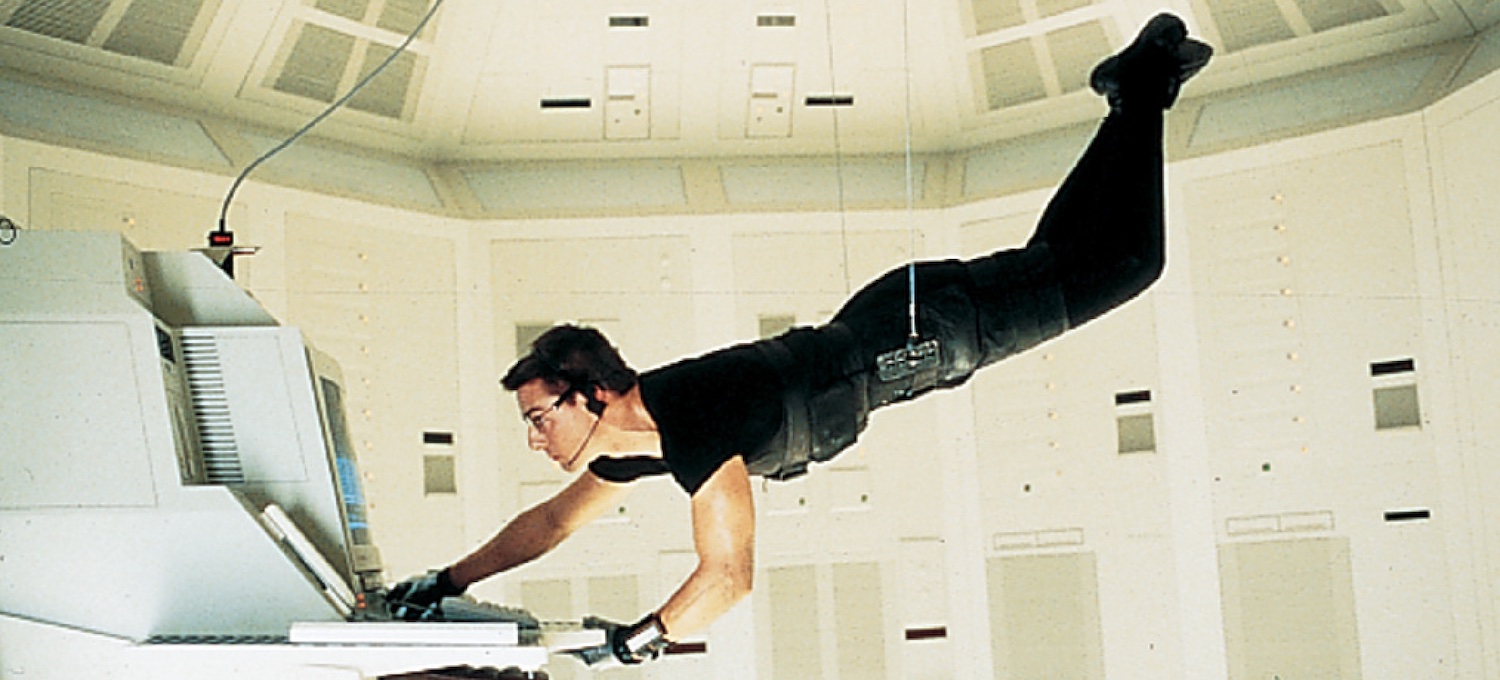'Mission: Impossible' and going big in an era of epic cost-effectiveness
After 25 years, 'Mission: Impossible' remains virtually the only franchise connecting audiences to a heyday of physical, real-world spectacle.

This post contains spoilers for Mission: Impossible.
Although not so many of them have made it to theaters in the last year, movies are bigger than ever: the costs, and the stakes for their success; the stars and series who make each new installment an event; and the collective prioritization of them as cornerstones of cultural touchpoints and dialogue. And yet, there’s more of them than ever, in every conceivable format and platform, demanding a tireless attention span (and bottomless pockets) to guarantee that audiences keep up and are part of the ongoing conversation. Mission: Impossible stands alone among these offerings as a throwback to the era of extreme stunts and physical effects, to a moment when the creative aim was bigger, better and more exciting, and not just more. A new Blu-ray release spotlights the original film and its context in cinema history, reminding us how thrilling it was upon its initial release, as well as what we have lost in a real sense as viewers in the subsequent 25 years since its debut.
It’s easy to forget that back in 1996, Mission: Impossible was a bit of an outlier in terms of summer movie offerings; this was long before existing intellectual property had become a deep and seemingly indefatigable well for studios and storytellers to draw from in lieu of, you know, just making up something new or original. The original show ran from 1966 to 1973, and a sequel series ran for two seasons starring in 1988, but six or seven years later, no one was clamoring for a big-screen update, even with Brian De Palma behind the camera and Tom Cruise in front of it. But if critics at the time pooh-poohed Hollywood’s lack of creativity for resuscitating the show, they were largely silenced by the end result, a brisk, exciting, smart action film featuring some of the best set pieces of the decade. Certainly the Chunnel sequence went down in history as an unforgettable conclusion to the saga of scrappy IMF point man Ethan Hunt (Cruise) exorcising himself of his mentor and clearing his own good name, but the Langley break-in is simply so unique, so well-executed, so thrillingly real and so unforgettable that it set a bar for every other action star to meet — not to mention Cruise himself, which he would almost improbably do over and over again in each sequel.
There’s a disappointing lack of transparency on the new Blu-ray, ported over from previous editions, exploring the making of that final sequence. Cruise briefly discusses being on the top of a moving train, and it’s clear that they staged the scene on a train-top set with wind machines aggressively pushing him and costar Jon Voight around. But looking at the Langley break-in, it’s abundantly and undeniably clear that Cruise performed that sequence himself — quite possibly utilizing some movie magic (I understand they had to weight his feet ever so slightly so that he could balance more easily while dangling inches off the floor), but it’s him, playing the role while tackling a real physical challenge that, well, not many other people could do. As accomplished and impressive as their work was during that time, Arnold Schwarzenegger and Sylvester Stallone and Bruce Willis and Will Smith never performed a stunt like that.
But Cruise not only did it in a thrilling demonstration of commitment and physicality, making it one of the few action sequences that come to mind that are so tense you could hear a pin drop during it, but setting a precedent that he would continue throughout the rest of the series. M:I-2 was sold purely based on Cruise’s free solo climbing scene that opens the film — a terrifying challenge that only a special agent would consider “relaxing.” Not only did Cruise do the climbing himself, but did it without a safety net (though he did have a harness, because Paramount quite justifiably was concerned about the actor falling to his death while filming). Mission: Impossible — Ghost Protocol featured Cruise scaling the outside of the Burj Khalifa in Dubai; Rogue Nation opens with Cruise hanging on the outside of an Airbus A400M Atlas, and later features scenes where Cruise holds his breath continuously for six minutes, and later very clearly does all of his own motorcycle driving himself. Meanwhile, Mission: Impossible — Fallout features Cruise performing a high-altitude low opening (HALO) parachute jump, and later, piloting a helicopter through an elaborate chase sequence.
It’s not merely the physical risk-taking that makes these films so appealing, however. It’s their scale and intelligence, building a world around Cruise’s character with real and intriguing political complexities featuring a supporting ensemble of, well, adults. Even after seeing the original Mission: Impossible more times than I can count, I can still remember how baffled moviegoers were about its descriptions of the “NOC list” and usage of phrases like “mole hunt” which have since become considerably more commonplace, but not at the time. The franchise has sometimes overcalibrated its responses to some of these minor quibbles — that film really wasn’t so complicated, but Mission: Impossible 2 really went broad and sometimes actively dumb, especially in quoting the Langley sequence with a “bigger” one using a bunch of lousy, unbelievable CGI. But even if Hunt’s team has spent more time over the movies being “disavowed” than, well, simply carrying out their missions, the writers and directors have attempted to reckon with some real-world political realities alongside the staging of some incredible stunts.
By comparison, many other franchises that attempt to tell stories on this broad a canvas either use a whole lot of CGI, or contain the action to a select number of locations to allow filmmakers to re-use sets and save production costs. Certainly audiences get the big action of, say, the Avengers films, but few viewers are mistaking those scenes for intensely practical locations — and why would they need to be? When you can assemble your team from a series of small individual shoots that accommodate actors’ differing schedules and allow you to stage, light, edit and polish these shots to make them look like a universe-ending showdown, there’s little need to actually capture everything in camera. But whether or not you knowingly prefer one to the other, there is a palpable difference on screen that the Mission: Impossible films epitomize.
The latest updates, reviews and unmissable series to watch and more!
Again, the franchise has definitely used special effects to accomplish many of its big sequences; you may or may not already know that they did not actually fly a helicopter into the Chunnel, but even though Cruise’s HALO jump was real, they filmed it over the Abu Dhabi desert and composited in Paris’ Champs-Elyssess afterward. But Cruise’s and the series’ commitment to doing as much of this stuff as possible offers a refreshing alternative to a landscape that filmmakers seem less and less interested in even attempting to make look real. Ultimately, that’s somewhat understandable, if it minimizes risks, protects lives and gives storytellers the opportunity to scale up their creativity; but after 25 years, this franchise proves over and over again that it’s not, well, impossible, and we as viewers, and the movies themselves, are all better off for it.
Todd Gilchrist is a Los Angeles-based film critic and entertainment journalist with more than 20 years’ experience for dozens of print and online outlets, including Variety, The Hollywood Reporter, Entertainment Weekly and Fangoria. An obsessive soundtrack collector, sneaker aficionado and member of the Los Angeles Film Critics Association, Todd currently lives in Silverlake, California with his amazing wife Julie, two cats Beatrix and Biscuit, and several thousand books, vinyl records and Blu-rays.


